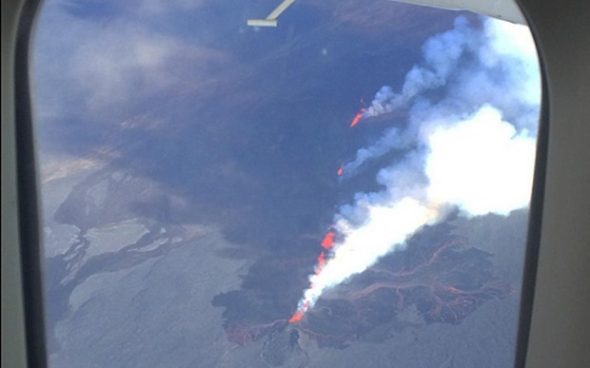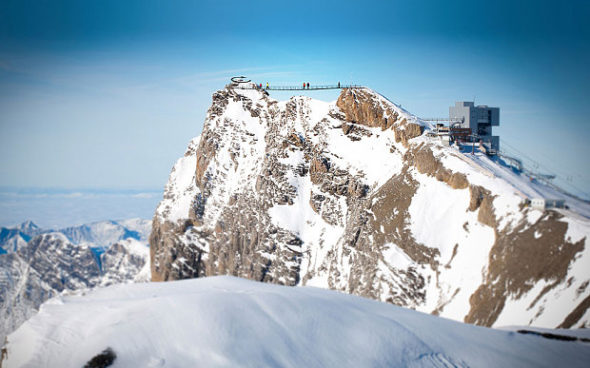Pilot takes detour to give passengers a closer look at active volcano
Human Interest News — Posted on September 15, 2014

A Icelandair passenger’s view of the Bardarbunga volcano (Photo: @Icelandair/Erla Vinsý)
Pilot takes detour to give passengers a closer look at Iceland’s Bardarbunga volcano
A thoughtful pilot took a brief detour to give passengers a closer look at Iceland’s Bardarbunga volcano.
It’s unlikely those on board the Icelandair flight minded the small delay as their pilot brought them on a once-in-a-lifetime sightseeing tour.
He took the flight on an extra circle around the volcano, giving his passengers a unique view of the stunning lava display.
Streams of lava and billowing smoke could be seen pouring from the volcano system, which has been hit by a surge of small earthquakes since August 16.
At the weekend, fountains of lava shooting 70 metres into the air prompted the country’s Met Office to raise its aviation warning to red, its highest level.
It was later reduced to orange and all airspace restrictions lifted, allowing the pilot to get a little closer to Iceland’s largest volcanic system.
The recent tremors have created cracks in the vast Vatnajokull glacier, allowing streams of lava to pour through.
Watch a Telegraph report:
World’s first suspension bridge between two mountain peaks to open in Swiss Alps
The world’s first suspension bridge between two mountain peaks is to open 9,700 feet up in the Swiss Alps.
The bridge, which will be partly have a glass floor, will allow visitors to walk between the twin peaks of Glacier 3000 and Scex Rouge in the canton of Vaud.

A mock-up shows the position of the new Peak Walk suspension bridge in Vaud, Switzerland (Photo: Glacier 3000)
It will offer vertiginous views of the 6,500 feet drop into the chasm between the mountains, and gentler prospects of Mont Blanc and the Eiger in the distance.
Construction workers are battling demanding conditions and racing to get the ambitious project ready in time for its scheduled opening in November.
Bad weather over the summer caused difficulties, but in Switzerland nothing is allowed to get in the way of the schedule, and steel cable for the bridge was ferried to the mountains by helicopter this week.
The helicopters have to make a journey to the peak every six minutes to keep up the supply of cables and concrete, while workers struggle breathlessly in the thin air.
When it is finished, the Peak Walk will be able to take 300 visitors safely at a time, although numbers will be limited to 150 to prevent crowding.
It will be open year round, though at certain times the weather may put visitors off – it has been built to withstand Alpine winds of up to 155mph.
The cost of the bridge is estimated at 1.8m Swiss francs (£1.2m). The private company behind it, Gstaad 3000, already operates several attractions at the site, including dog sled riding, glacier flights and year-round tobogganing, as well as extensive ski runs.
It hopes the new bridge will help double the number of visitors each summer, currently around 50,000.
The new bridge may be a remarkable feat of engineering, but it will still not be the highest suspension bridge in the world. That title goes to another Swiss bridge, the Titlis Cliff Walk in Olbwaden, at 9,900 feet above sea level.
From London’s Daily Telegraph.
